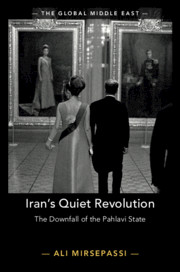Book contents
- Iran’s Quiet Revolution
- The Global Middle East
- Iran’s Quiet Revolution
- Copyright page
- Contents
- Acknowledgments
- Note on Transliteration
- Introduction
- 1 The Allure of the “Anti-modern”
- 2 De-politicizing Westoxification:
- 3 Ehsan Naraghi:
- 4 Iranian Cinema’s “Quiet Revolution” (1960s–1970s)
- 5 A Garden between Two Streets:
- 6 The Shah as a “Modern Mystic”?
- 7 The Imaginary Invention of a Nation:
- 8 An Elective Affinity:
- Bibliography
- Index
3 - Ehsan Naraghi:
Chronicle of a Man for All Seasons*
Published online by Cambridge University Press: 23 August 2019
- Iran’s Quiet Revolution
- The Global Middle East
- Iran’s Quiet Revolution
- Copyright page
- Contents
- Acknowledgments
- Note on Transliteration
- Introduction
- 1 The Allure of the “Anti-modern”
- 2 De-politicizing Westoxification:
- 3 Ehsan Naraghi:
- 4 Iranian Cinema’s “Quiet Revolution” (1960s–1970s)
- 5 A Garden between Two Streets:
- 6 The Shah as a “Modern Mystic”?
- 7 The Imaginary Invention of a Nation:
- 8 An Elective Affinity:
- Bibliography
- Index
Summary
In many ways, the story of Ehsan Naraghi is the story of Iran, a country that has demonstrated an extraordinary capacity for survival. Throughout history, Iran has overcome numerous challenges that have left the country shaken but triumphant, battered but never beaten.1
- Type
- Chapter
- Information
- Iran's Quiet RevolutionThe Downfall of the Pahlavi State, pp. 58 - 106Publisher: Cambridge University PressPrint publication year: 2019

